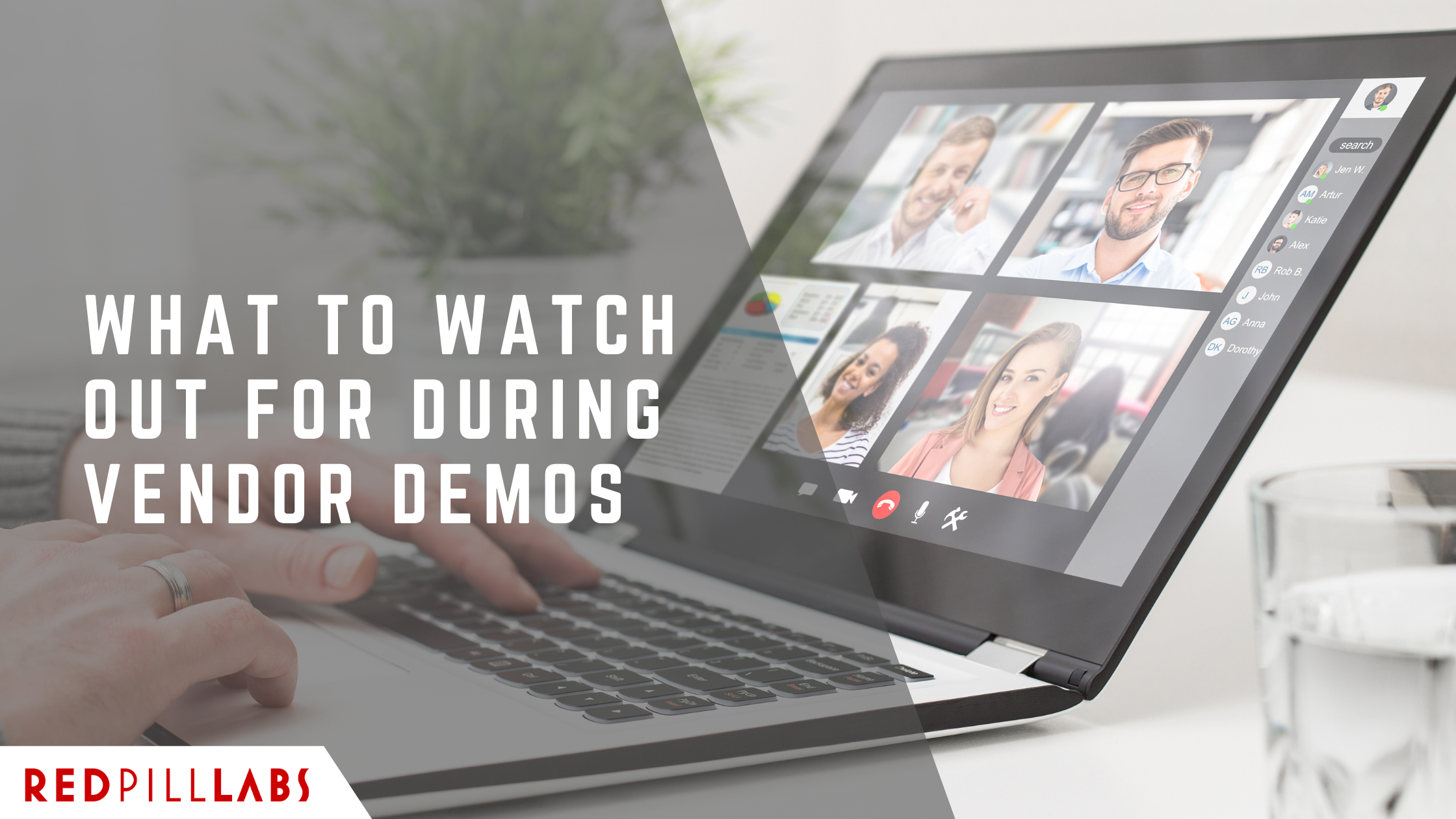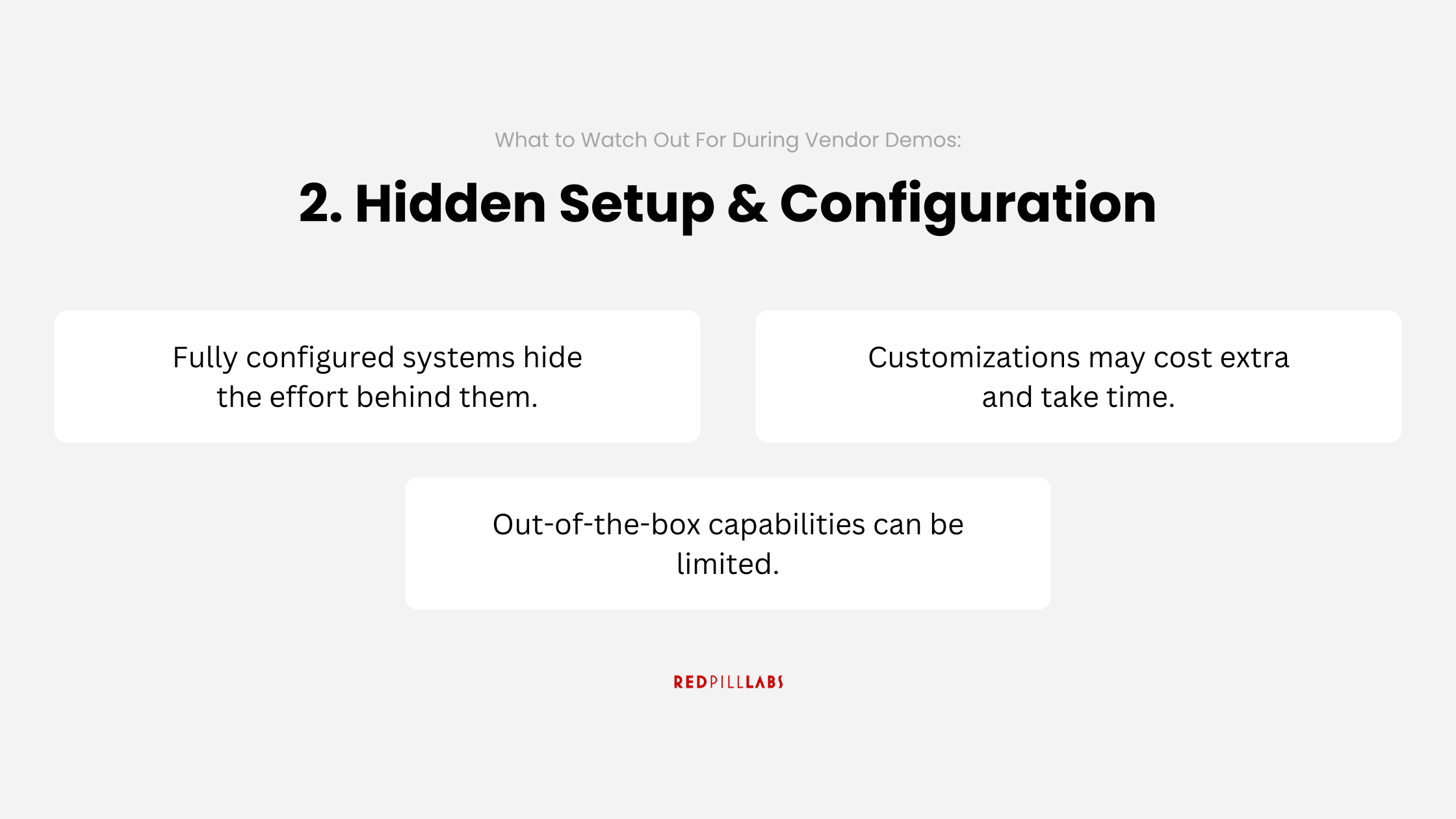What to Watch Out for During Vendor Demos
blog/what-to-watch-out-for-during-vendor-demos
2025-07-24
When evaluating new systems for your business — whether it’s a Human Capital Management (HCM) platform, Enterprise Resource Planning (ERP) suite, or a customer relationship management (CRM) tool — the vendor demonstration is one of the most critical steps in the selection process.
Done right, it can help you assess whether a product truly meets your needs.
Done wrong, it can lead to costly decisions based on smoke and mirrors.
Below are a few key things to watch out for during vendor demonstrations to ensure your evaluation is thorough and your decision is well-informed.
1. A “Polished” Demo That Doesn’t Reflect Real Life
Vendors are skilled at making their systems look slick and effortless in a demo environment.
What you’re often seeing is a scripted, curated scenario designed to impress. The data is clean, the workflows are preconfigured, and the users are experienced with the product.
What to do instead:
Ask the vendor to demonstrate real-life scenarios your business would actually encounter — including messy, complex ones.
Provide them with sample data from your operations ahead of time if possible.
Insist on seeing how exceptions, errors, and edge cases are handled.
2. Skipping Over Configuration and Setup
Demos often show a fully configured system, but don’t explain what it takes to get there.
You may leave thinking that it works “out of the box,” only to discover later that extensive (and expensive) customization is required.
What to do instead:
Ask about:
What’s included in the standard implementation?
How much time and effort is required from your team?
What configurations can your team manage on your own after go-live?
Document these answers and make sure they’re reflected in your agreement.
3. Ignoring Integration Challenges
Vendors tend to gloss over how their system integrates with your existing tools.
You might hear: “Oh yes, we have an API for that!” without a clear explanation of what that actually means for your IT team or budget.
What to do instead:
Get specific examples of customers who have integrated with similar systems.
Ask what pre-built connectors exist and what would require custom development.
Discuss ongoing maintenance of those integrations.
4. Understating Training and Change Management Needs
A demo presenter knows their system inside and out — your employees won’t.
Systems that look intuitive during a demo may have a steep learning curve in practice.
What to do instead:
Ask to see examples of training materials, user documentation, and onboarding resources.
Understand what training is included in the implementation package, and what costs extra.
Ask about support options beyond go-live.
5. Overpromising Roadmap Features
Vendors love to highlight exciting features “coming soon.”
However, relying on future development is risky — roadmaps can shift, and promised functionality may never materialize.
What to do instead:
Focus your evaluation on what is available now. If a feature is critical but not yet released, make sure you get a firm commitment in writing, with timelines and conditions.
6. Not Evaluating the User Experience Across Roles
In a demo, you’re often shown the administrator view or an idealized end-user experience.
But what about managers, front-line employees, or external partners who will also interact with the system?
What to do instead:
Ask to see the system from different user perspectives.
Walk through specific workflows that different roles will perform.
Don’t assume everyone’s experience is equally user-friendly.
Key Takeaways
A vendor demo is a sales pitch — and that’s fine, as long as you approach it with clear expectations and a critical eye.
The best way to protect your business is to prepare detailed use cases, involve the right stakeholders in the demo, and document your findings.







